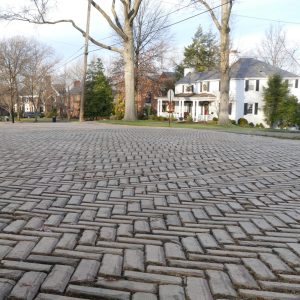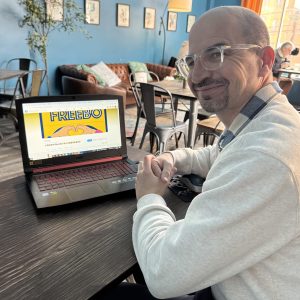October Will Never Be the Same
October will never be the same.
October, otherwise known as Breast Cancer Awareness Month, when pink ribbons and pink everything are everywhere—and not because of Barbie.
Sure, I knew people with breast cancer—family and friends who fought the disease, ones who were battling recurrences, and some who didn’t make it. I knew people with the BRCA gene mutation, putting them at a higher risk of getting breast cancer. They chose to get prophylactic mastectomies, lowering their odds drastically. And we all know about celebrities who have shared their diagnoses—Katie Couric, Robin Roberts and Julia Louis-Dreyfus. The list goes on and on.
Pinkwashing—when a company markets a product or service without meaningfully supporting breast cancer research or awareness, i.e., exploiting for profit—was annoying, but I didn’t take it personally.
But all this was still too abstract.

That is, until I got my own diagnosis. I’m one of the 287,850 women the American Cancer Society estimated would be diagnosed with invasive breast cancer in 2022. But I’m more than a statistic. Now I can call myself a survivor.
It all started last summer, when I felt a long, hard mass in my right breast when showering. It seemingly appeared overnight. And it didn’t feel like the kind of “lump” that’s associated with breast cancer. I always thought those lumps were small, not roughly four centimeters like mine was. But it didn’t go away. So I scheduled a mammogram, which was concerning enough to warrant an immediate breast ultrasound. I can never make sense of those sound wave-induced images, but when I saw the black mass on the screen, I knew it was no benign cyst. Sure enough, the radiologist admitted it was highly suspicious for cancer.
The next step was a biopsy, my first. Then a long wait—the first of many. I got my official diagnosis on August 31, 2022. I thought I could handle it, whether a lumpectomy or a mastectomy. I didn’t consider chemotherapy as a possibility, but my oncologist mentioned it at my first appointment, pending pathology results. Apparently my cancer was aggressive, given its size and how fast it grew. Turns out my receptor type was triple negative, meaning it wasn’t hormonal, was aggressive, and was harder to treat.
That meant chemo. Something I’d always said would be difficult for me to endure. It was overwhelming, but I had no choice. In September, 2022, I started chemo and immunotherapy with a relatively new drug, effective for triple negative breast cancer. I had a port installed, thus setting the stage for my first breast cancer scar.
I couldn’t have an MRI because I have a cochlear implant, so I had a PET scan instead to see if the cancer had spread. That was an agonizing wait. Thankfully, the cancer was localized, and my lymph nodes were clear. The next big hurdle was waiting on genetic results. Surprisingly, everything came back negative, which means my risk for other cancers is the same as the general population.
The first round of chemo was with the harshest drugs, known as AC (Adriamycin cyclophosphamide), every three weeks for four cycles. Then I had 12 consecutive weeks of Taxol.
Within weeks of starting chemo, my hair started thinning and falling out. I knew it would be traumatic if I let the rest come out on its own, so I had my husband shave it off. We had a little fun on the way out, creating different styles like a mohawk. Finding head coverings was difficult and an ongoing process; I never found something I really liked. I’d have gone bald if not for feeling cold!
Everyone responds to chemo differently, and it is cumulative, so the effects get worse as time goes on. I’ve always gotten the weird medication side effects, so I wasn’t surprised that I got pretty much all of the chemo side effects. It was rough, and nothing really helped. Oh, and this was all during COVID, when universal masking in healthcare settings were still in place. As someone who is deaf and reads lips, this was an additional challenge. But chemo was effective; I could feel my mass shrinking until I couldn’t even feel it anymore.
I finished chemo at the end of February, 2023. A month later, I had a lumpectomy and sentinel node biopsy (more scars). A few days after that, I caught an early blood clot and had to go on blood thinners for three months. A month after my surgery, I started radiation, which meant going daily Monday through Friday for 20 sessions.
I finished treatment June 1. But breast cancer isn’t done with me. I have followup oncology visits every three months. I had a scare this summer when I felt a hard mass and had to have a mammogram, breast ultrasound, and then biopsy—all too familiar, and with eerie timing, as it was almost a year to the day of my diagnosis. This was also around the time when we took our youngest to college for the first time (All the feels!) Thankfully, the biopsy was negative; it was just scar tissue from the surgery. But this is my new reality, given my history.
If my kind of breast cancer is going to come back, it will in the next few years. I’m not considered in remission until five years have passed. But so far, all signs look good. I’d be lying if I said I don’t worry about recurrence, but I’d also be unable to function if I let myself think about it too much.
My taste buds totally changed on chemo, and took an unusually long time to return to normal. I’m finally feeling like myself again—mostly. My hair is growing back slowly (did you know hair only grows half an inch a month?!)
Please do what you can to avoid joining this club. Always get those routine mammograms. Do breast self-exams. Make sure anything you purchase for breast cancer awareness actually goes to breast cancer research and support.
Octobers will never be the same again. For that matter, neither will I.





